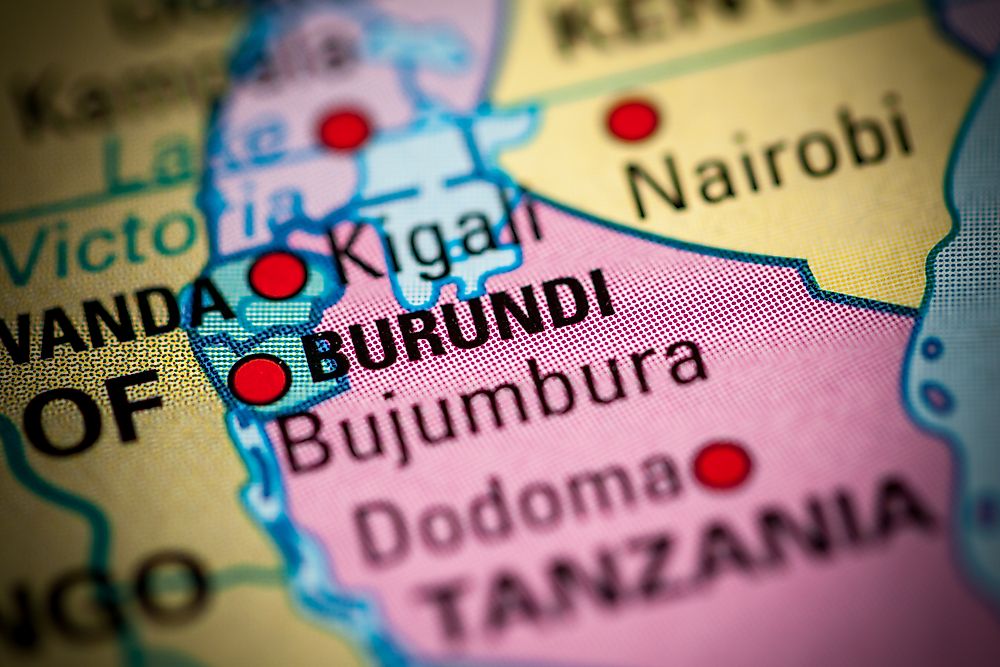What Type Of Government Does Burundi Have?

Burundi has a presidential system of government where the President of the country is head of both the state and the government. The modern day region of Burundi was governed by the Kingdom of Burundi from 1680 to 1966. The Germans did not succeed in their efforts to occupy the area, and it was not until World War one that Belgian troops occupied Burundi. The nation achieved independence on July 1, 1962. In 1993, Burundi was rocked by genocide which spiraled into civil war between the Tutsi and Hutu ethnic groups. President Pierre Nkurunziza was elected in 2005 as the country's first president by democratic means since the outbreak of the civil war.
Executive Branch Of The Government Of Burundi
Burundi's President is elected by the citizens for a five-year term. Some of the requirements for a presidential candidate in Burundi are to be a Burundi citizen by birth, live in Burundi's territory at the time their candidacy is presented, and be at least 35 years of age. Burundi's president is mandated by the Constitution to ensure adherence to the Constitution, guarantee territorial integrity and national independence, a symbol of national unity, and guarantee respect for international treaties and agreements. Burundi's President is assisted by two vice-presidents, and can also appoint ministers. The President can declare war in their capacity as the Commander-in-Chief of the Corps of Defense and Security.
Legislative Branch Of The Government Of Burundi
Legislative duties in Burundi are carried out by the bicameral parliament. The lower chamber is the National Assembly and the 100 members of the Assembly are directly elected. Elections are conducted in 17 multi-member constituencies via a party-list proportional system based on the d'Hondt method. Political parties, as well as lists of independent candidates, are required to gain more than 2% of the votes cast nationally to acquire seats in the National Assembly. The 2005 Constitution requires that 60% of the representatives come from the Hutu ethnicity while the rest 40% be from the Tutsi ethnicity. A further three co-opted members come from the Twa ethnicity while women should occupy a minimum of 30% of the seats. The Senate is Burundi's upper chamber. Each of the nation's 17 provinces is represented by two Senators, one Tutsi and another Hutu. The senators are elected by electoral colleges of communal councilors. The Twa ethnicity is represented by three senators and co-opted members may be required to meet the stipulated 30% gender representation for women.
Judicial Branch Of The Government Of Burundi
The judicial structure of Burundi borrows from Belgian civil law and customary law. The Supreme Court of Burundi consists of three chambers namely the Chamber of Cassation, the Judicial Chamber, and the Administrative Chamber. The Court is presided over by nine members headed by a President. Also attached is a National Department of Public Prosecutions. There are three Courts of Appeal situated in Bujumbura, Gitega, and Ngozi. Each of the provinces has a local county court. There are also 127 Resident Magistrate's Courts which operate in the communes and deal with civil and criminal cases including eviction matters, land issues, and family matters. The Constitutional Court of Burundi makes sure that formulated laws are in line with the Constitution and it also gives audience to cases linked to human rights violations.
Administrative Divisions Of Burundi
Burundi has 17 provinces namely Ruyigi, Kirundo, Bubanza, Karuzi, Rutana, Bujumbura Rural, Muyinga, Cankuzo, Makamba, Bujumbura Mairie, Kayanza, Ngozi, Muramvya, Mwaro, Cibitoke, Gitega, and Bururi.











